This is a war without gunpowder, but alarms have already sounded in everyone's wallet.
Author: Daii
Last week, U.S. President Trump ignited a tariff storm, instantly pulling the global economy into a severe shock. U.S. stocks plummeted, with $5 trillion in market value evaporating in two days, and Bitcoin was not spared either. But did you know? The real destructive power of this tariff war is actually hidden in something we are most familiar with yet often overlook—currency.
The reason the U.S. dares to wield the tariff stick so arrogantly is not just based on the trade deficit card, but more crucially, the underlying trump card is the dollar hegemony. The dollar not only controls global trade but has also become a covert economic weapon; whoever controls the dollar controls the lifeblood of the global economy.
What is even more concerning is that this war will spread from the commodity sector to the currency sector, and a global currency devaluation race is unfolding.
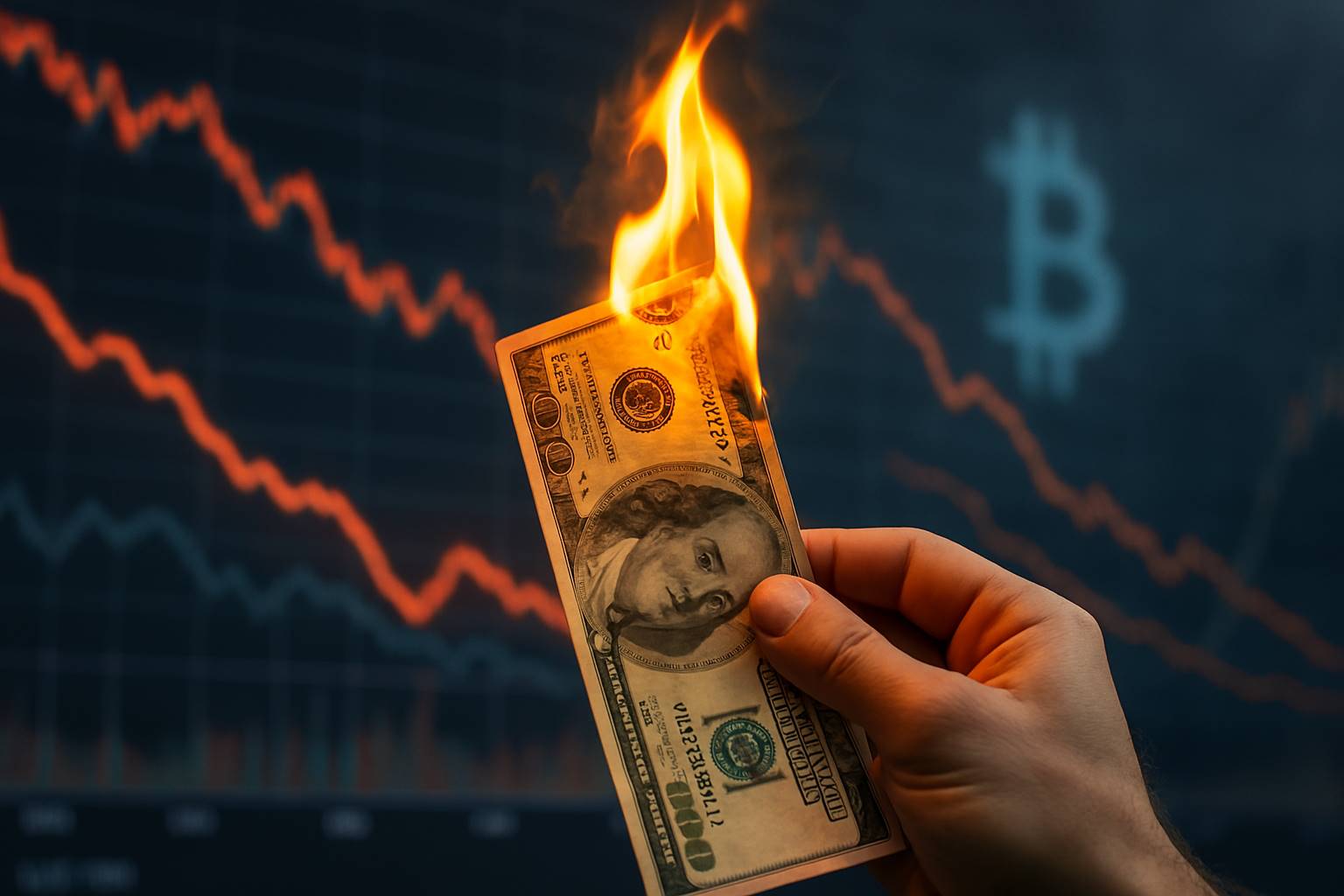
So how should ordinary people face such a war without gunpowder? Let us peel back the layers of truth in this war and see who the ultimate winner is. Without further ado, let’s get straight to the answer:
Contrary to many people's expectations, the ultimate winner may not be a country, but decentralized stablecoins.
First, let’s take a look at how various countries reacted to the U.S. tax increase.
1. Hardline vs. Moderate
In response to President Trump's announcement on April 2, 2025, of an additional 34% tariff on Chinese goods, China quickly made a hardline response.
On April 4, the Tariff Commission of the State Council of China announced that starting from April 10, an additional 34% tariff would be imposed on all imported goods originating from the U.S. on top of the current applicable tariff rates. Additionally, China implemented export controls on key resources such as rare earths and filed a lawsuit with the World Trade Organization (WTO), accusing the U.S. tariff measures of violating international trade rules. This series of measures demonstrates China's firm stance in safeguarding its rights in the trade dispute.
Subsequently, the U.S. announced that if China did not withdraw its retaliatory 34% tariff, it would impose an additional 50% tariff. A standoff ensued, with neither side willing to back down.
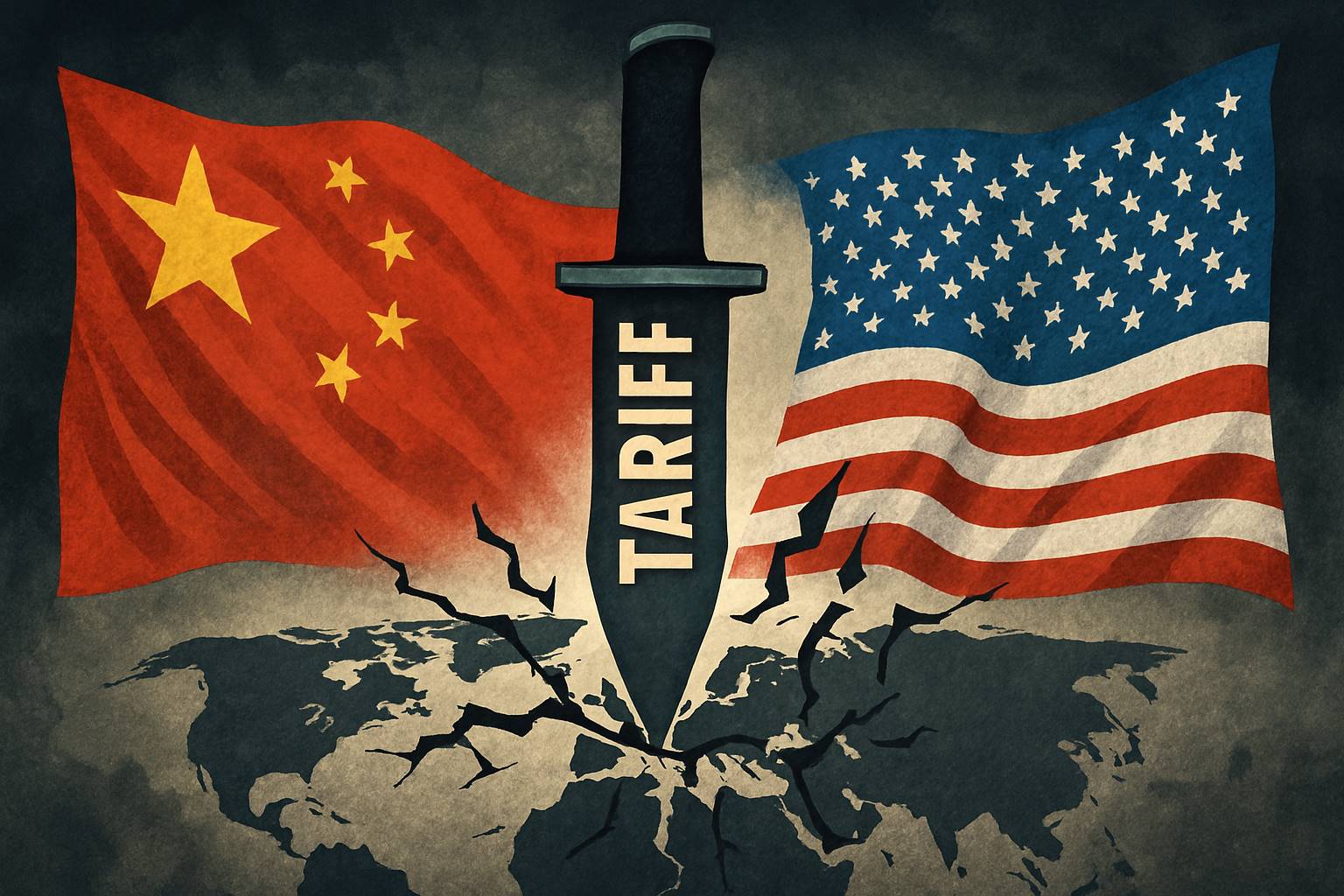
In contrast to China's hardline stance, Vietnam opted for a moderate policy.
As one of the countries most severely affected, Vietnam faces tariffs as high as 46% from the U.S. The Vietnamese government quickly took action, seeking to resolve the dispute through diplomatic means. Vietnamese Communist Party General Secretary Nguyen Phu Trong held a phone conversation with President Trump, expressing Vietnam's willingness to reduce tariffs on U.S. goods to zero in exchange for the U.S. canceling its high tariffs on Vietnam.
Furthermore, the Vietnamese government requested the U.S. to postpone the implementation date of the tariffs by 45 days to allow both sides time for negotiations. Vietnamese Deputy Prime Minister Pham Minh Chinh was sent to the U.S. in hopes of resolving the tariff issue through diplomatic channels.
During an emergency cabinet meeting, Prime Minister Pham Minh Chinh emphasized that despite the challenges, Vietnam would still adhere to a GDP growth target of 8% or higher. He pointed out that this challenge also presents an opportunity for economic structural adjustment, aiming for rapid and sustainable development, expanding markets, and optimizing supply chains.
Reactions from other countries:
European Union: European Commission President Ursula von der Leyen stated that the EU is willing to negotiate with the U.S. to seek zero tariffs on industrial goods, but warned that if negotiations fail, the EU will take countermeasures.
Japan: Japanese Trade Minister Hiroshi Kajiyama expressed regret over the U.S. tariff decision, stating that Japan would consider taking appropriate measures in response.
Australia: Australian Prime Minister Anthony Albanese criticized the U.S. tariff measures as "unfounded," but stated that Australia would not impose retaliatory tariffs.
Now it seems that aside from China's strong reaction, other countries have responded relatively moderately. In stark contrast to China is Vietnam, especially with Prime Minister Pham Minh Chinh stating that this challenge is also an opportunity for economic structural adjustment. There is a hint of turning pressure into motivation, which is particularly worth savoring.
In fact, it is not that Vietnam lacks courage, but rather that the consequences of this tariff war are truly unbearable for them. If a fight breaks out, not only would the U.S. struggle to bear it, but China would also find it difficult, making Vietnam's moderation a necessity.
2. Tariff War: Two Knives Cutting Through the Global Economy
If the tariff war truly escalates, it will slice through the global economic fabric like two sharp knives, ruthlessly tearing apart the texture of the global economy.
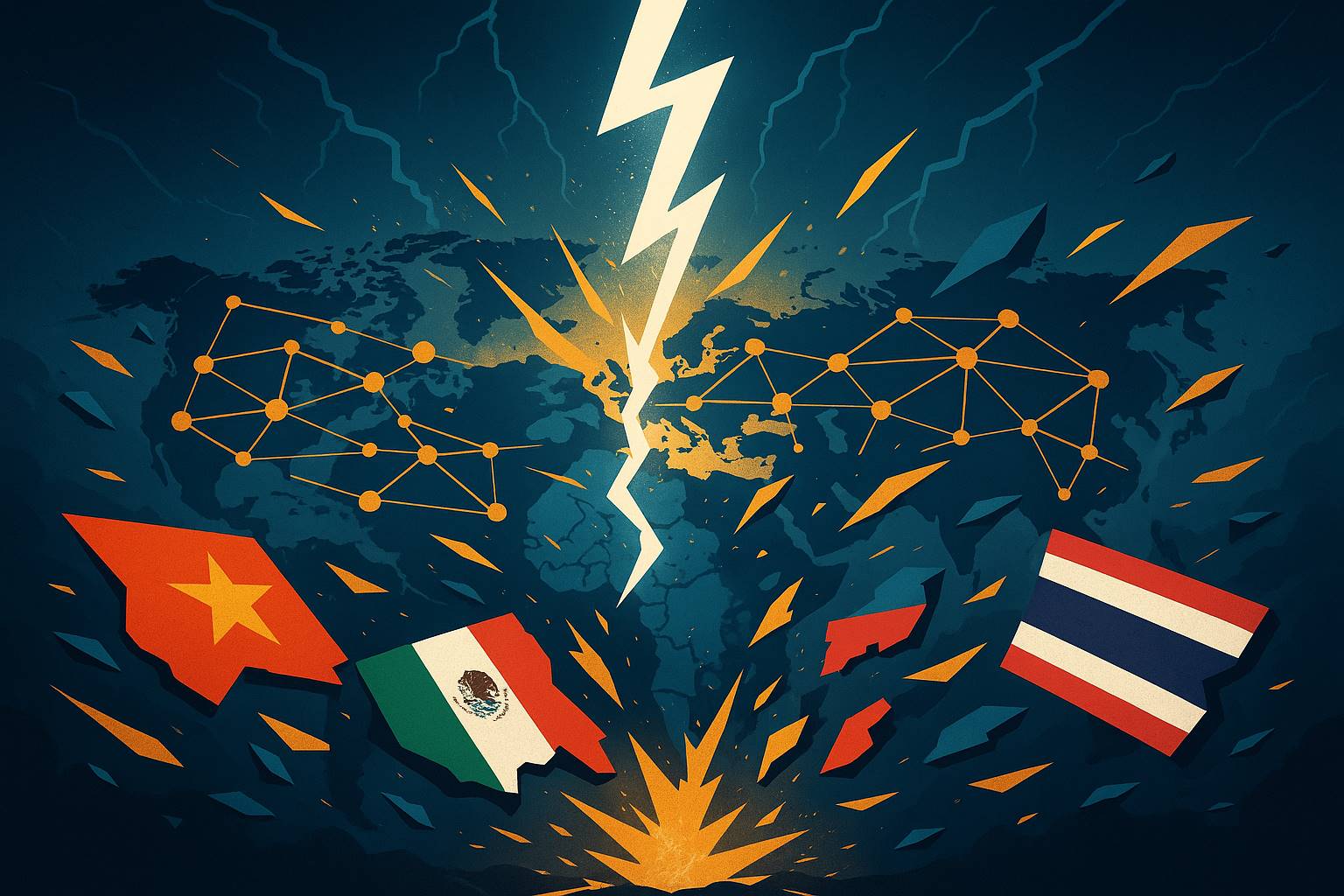
2.1 Knife One: The Pain of Supply Chain Restructuring
The most direct and visible effect of the U.S. wielding the tariff stick is the severe impact on global supply chains. High tariffs act like a man-made trade barrier, instantly raising the cost of imported goods. This not only directly increases the expenses for U.S. consumers but also puts immense export pressure on Chinese manufacturing that relies on the U.S. market.
To avoid high tariffs, the global industrial chain will be forced to undergo another massive restructuring. The data from the past three years (2022-2024) serves as a rehearsal:
The Rise of Southeast Asia: As the World Bank's report shows, the ASEAN region has become one of the biggest beneficiaries of this supply chain shift.
In 2024, foreign direct investment (FDI) in manufacturing in the ASEAN region surged nearly 30% compared to 2020. This is not without reason. We can see that industries such as electronics, textiles, and light industry are accelerating their transfer to Southeast Asian countries like Vietnam and Thailand. For example, Samsung Electronics closed its last mobile phone factory in China and increased its investment in Vietnam and India. Japan's clothing brand Uniqlo has also begun to increase its production ratio in Southeast Asia to reduce dependence on a single market. The migration of these companies has directly driven local employment and economic growth.
The "Rise" of Vietnam and Mexico: With their geographical advantages and relatively low labor costs, Vietnam and Mexico are gradually becoming important manufacturing alternatives for U.S. companies outside of China. For instance, Vietnam's exports to the U.S. have continued to rise over the past three years, especially in textiles, footwear, and electronic components. Mexico, due to its geographical proximity to the U.S. and the North American Free Trade Agreement (though replaced by the USMCA in 2020, its influence remains), has attracted significant investments in the automotive parts and home appliance industries. In the short term, these countries have indeed enjoyed the dividends brought by industrial transfer.
Now, with President Trump announcing a 10% tariff on all imported goods and an additional tariff of over 50% on goods from China, the previously seemingly "win-win" industrial chain transfer pattern will once again face severe shocks. It is like the earth's crust undergoing violent tremors after an earthquake, with the "plates" that had already begun to migrate facing new uncertainties.
For those companies that have already transferred some production capacity to Vietnam, Mexico, and other locations, the new tariff policy is undoubtedly a heavy blow. Although they may have avoided the additional tariffs of over 50% on China, the 10% tariff imposed on all imported goods will still increase their operating costs and weaken their price competitiveness.
Worse still, if these companies' production in Vietnam or Mexico still relies on imported components and raw materials from China, the costs of these intermediate products will also rise significantly due to the tariffs of over 50% from China, ultimately leading to an increase in their overall production costs.
This new tariff shock will also accelerate the further decentralization and regionalization of global supply chains. Companies may be more inclined to establish production bases closer to the final consumer markets or to spread their production capacity across multiple countries to reduce dependence on a single country or region. This trend may lead to a more complex global trade pattern, further reducing the efficiency of supply chains and increasing management costs for companies.
In summary, the new tariff policy acts like a sharper knife, which will not only exacerbate the existing pain of supply chain restructuring but also have broader and more profound impacts on various aspects of the global economy. Companies and countries that had already begun to adapt to the new pattern will once again be forced to face a new round of adjustments and challenges.
2.2 Knife Two: The Threat of "Stagflation Trap"
As renowned investor Ray Dalio has warned, tariffs inject a "stagflation" poison into the global economy. Exporting countries face deflationary pressures due to reduced demand, while importing countries feel the pain of inflation due to rising commodity prices. This situation of stagnation coexisting with inflation is precisely the "stagflation trap" that economists dread the most.
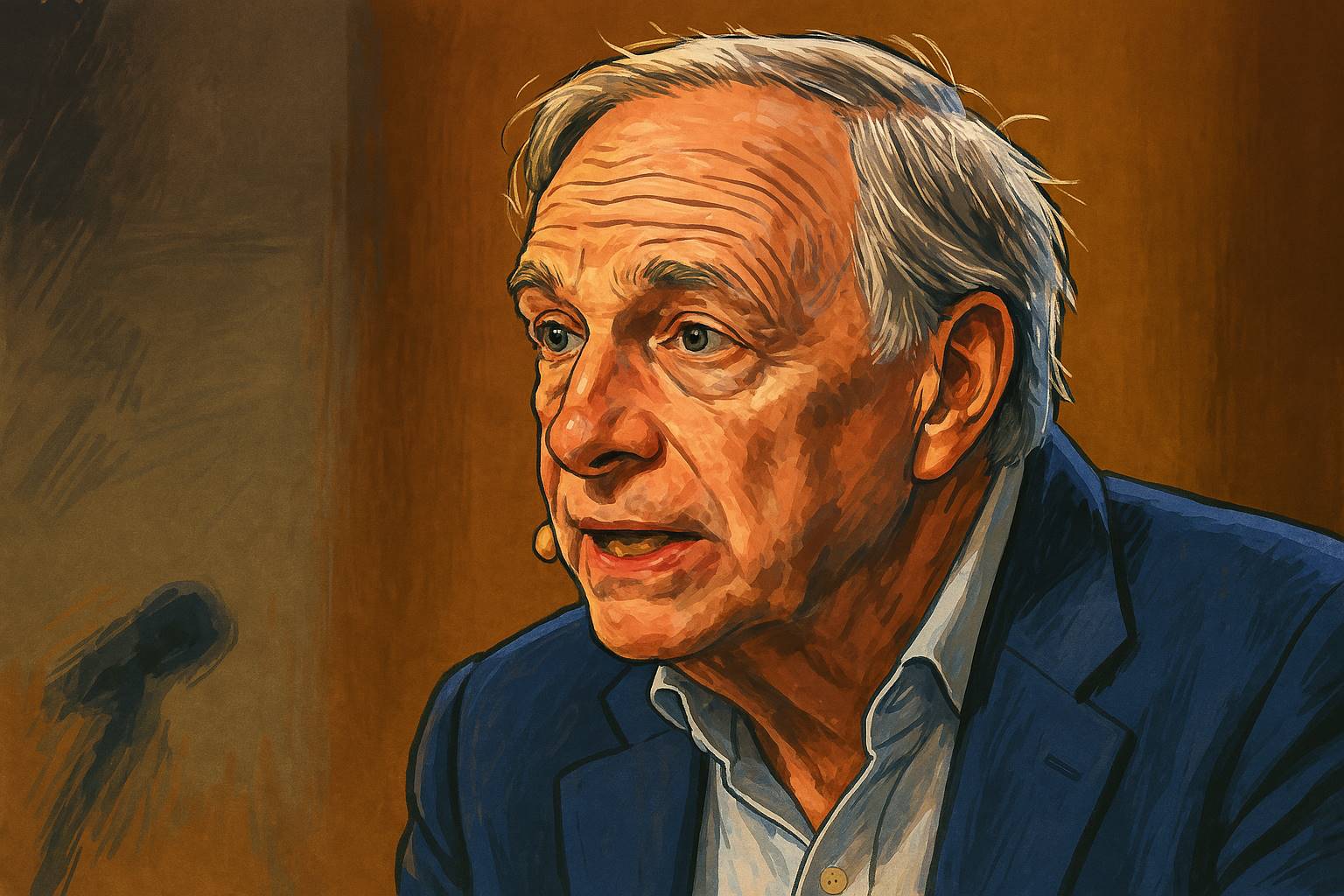
Let’s take a look at the actual data performance of the U.S. and major exporting countries:
The "Steady Rise" of U.S. Inflation: Since the further escalation of U.S. tariff policies at the end of 2024, we can clearly see the continuous rise of the U.S. Consumer Price Index (CPI). According to data from the U.S. Bureau of Labor Statistics, as of February 2025, the U.S. CPI index has cumulatively increased by 0.684% compared to the end of 2024. Among them, goods significantly affected by tariffs, such as electronics, clothing, and furniture, have seen even more pronounced price increases. This directly leads to a continuous rise in the cost of living for the American public and a decline in real purchasing power. The annualized inflation rate in the U.S. is about 2.8% to 3.0%, far exceeding the control target of 2%.
The "Chill" for Exporting Countries: For export-oriented economies like China, South Korea, and Germany, the U.S. tariff increases are undoubtedly a heavy blow. In the short term, these countries face a significant shrinkage in export demand to the U.S., leading to reduced orders for companies and slowed production. To digest excess capacity, some companies have to lower prices, facing profit declines or even losses. This further affects companies' willingness to invest and may even trigger waves of layoffs, exacerbating unemployment risks. For example, according to analysis by the Economist Intelligence Unit, China's GDP growth rate is expected to decrease by 0.6% to 2.5% from 2025 to 2027, depending on the intensity of the tariffs.
The terrifying aspect of the "stagflation trap" within a country is that traditional monetary policy often struggles to address both stagnation and inflation simultaneously. If central banks adopt loose monetary policies to stimulate economic growth, it may further exacerbate inflation; conversely, if they implement tight monetary policies to curb inflation, it may lead to further economic decline. This creates a dilemma for governments when formulating economic policies.
It is important to note that the "stagflation" caused by this tariff war is not a domestic stagflation but a global one; for importing countries, it is inflation, while for exporting countries, it is stagnation. Solving this global stagflation dilemma is far more complex than the challenges faced within a single country.

For importing countries like the United States, the main challenge is the continuously rising prices. To curb inflation, the traditional approach is to raise interest rates. However, in a situation where economic growth has already slowed due to tariffs and supply chain disruptions, raising interest rates may further dampen economic activity and even trigger a recession.
On the other hand, for exporting countries like China, the main issue is the slowdown in economic growth caused by insufficient demand. To stimulate the economy, they typically adopt loose monetary policies such as lowering interest rates and increasing credit supply. However, in the context of global trade tensions, such measures may lead to capital outflows and currency depreciation, further exacerbating trade frictions with the United States.
Therefore, this global stagflation dilemma makes it difficult for any single country's policies to be effective, and they may even backfire. Importing and exporting countries face entirely different policy dilemmas, and unilateral actions by either side struggle to find a balance, let alone form a collective effort to solve the problem on a global scale.
This is also why economists like Ray Dalio are concerned about this situation, as it suggests that the global economy may enter a prolonged period of low growth and high inflation.
2.3 Summary
In summary, this tariff war is like two invisible blades quietly tearing apart the nerves of the global economy.
The first blade, the pain of supply chain restructuring, forces global companies to incur huge costs to adjust their production layouts, leading to reduced efficiency and ultimately higher prices borne by consumers.
The second blade, the threat of the "stagflation trap," places governments in a dilemma, having to deal with inflationary pressures while avoiding further economic slowdown, with traditional monetary policy tools proving inadequate.
Faced with supply chain disruptions and the risk of stagflation, some countries may turn their attention to their only shield—currency. A currency devaluation race, where countries seek to shift the burden onto their neighbors, may be quietly unfolding.
3. The Currency Shield: A Poison That Quenches Thirst
Deep in the mists of history, the time machine of the economy repeats similar stories time and again. Humanity is always accustomed to learning lessons from history, yet often overlooks these lessons. Currency wars, a term that seems professional and complex, have actually played out repeatedly in human economic history.
Today, this "currency shield" is once again employed by various countries, seemingly able to temporarily alleviate the severe pain of the economy, but history tells us that it is, in fact, a genuine poison that quenches thirst.
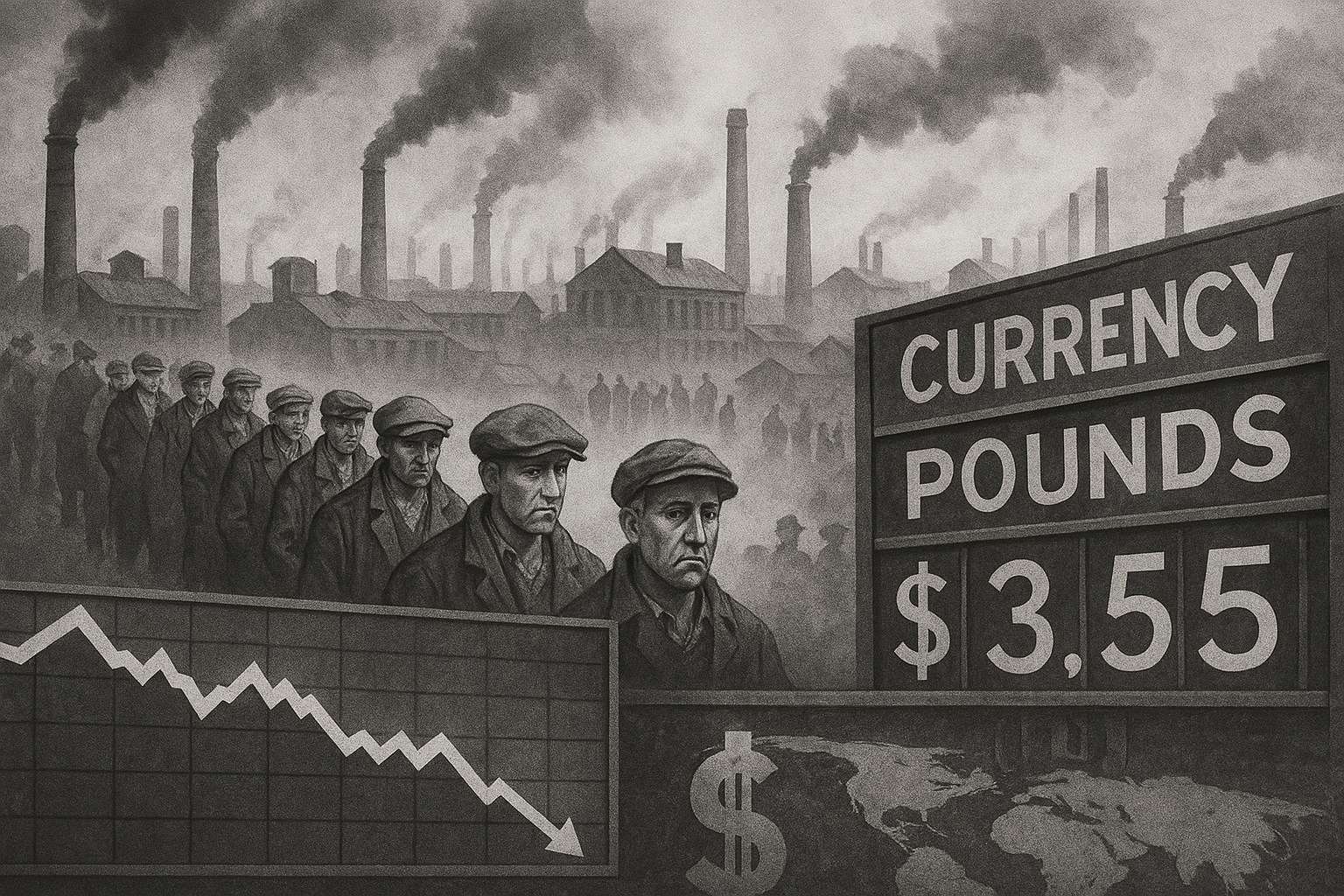
3.1 Currency Devaluation During the Great Depression
During the Great Depression of the 1930s, economies around the world fell into a slump and deflationary crisis. To stimulate exports and save their economies, countries rushed to devalue their currencies. In 1931, the United Kingdom was the first to abandon the gold standard, allowing the pound to float freely. The pound quickly depreciated by about 30% against the dollar, leading to a significant increase in the UK's export price advantage and a brief rebound in exports.
This move by the UK triggered a storm globally. France, Germany, and Italy followed suit, using currency devaluation as a tool for economic recovery. This competitive devaluation sparked a chain reaction, with countries erecting high tariff barriers against each other in an attempt to protect their domestic markets. However, the reality was brutally harsh, as global trade volumes plummeted as a result. According to data from the International Monetary Fund (IMF), from 1929 to 1933, global trade volume fell by more than 60%, exacerbating the economic recession and causing unemployment rates to soar, with the U.S. unemployment rate exceeding 25%.
3.2 Currency Devaluation During the Asian Financial Crisis
If the lessons of the Great Depression seem distant, then the recent currency wars must include the 1997 Asian financial crisis. At that time, many Asian economies had accumulated massive external debts after experiencing rapid growth, and hot money inflows led to soaring asset prices. When foreign capital began to withdraw, currencies in Southeast Asia, such as the Thai baht, Indonesian rupiah, and Malaysian ringgit, collapsed.
Thailand was the first to announce the abandonment of its dollar peg in July 1997, causing the baht to plummet by more than 50% in a short period. To maintain export competitiveness, other countries quickly followed suit with devaluations, but this led to even more severe capital flight. South Korea exhausted its foreign exchange reserves within a few months and was forced to seek emergency assistance of up to $58 billion from the International Monetary Fund.
The devalued currencies provided a temporary boost to export competitiveness but also resulted in severe inflation and economic recession. Indonesia even experienced widespread social unrest, leading to the ousting of President Suharto. Data showed that Indonesia's inflation rate during the crisis exceeded 70%, with skyrocketing unemployment rates plunging society into chaos.
The echoes of history warn us: currency devaluation, which seems like a simple economic tool, actually hides unpredictable and enormous risks. Once countries compete to devalue their currencies, not only is the export advantage temporary and unsustainable, but it also leads to turmoil in global capital markets, causing long-term economic recession and imbalance.
However, the short-term effectiveness of the currency shield will tempt more countries to plunge into an irretrievable abyss.

3.3 Currency Devaluation: A Lifeline That Must Be Grasped
In today's tariff war, countries are once again pushed to the edge of the currency devaluation cliff. Faced with the threat of sharply declining exports and an impending wave of unemployment, devaluing currency has become a desperate "lifeline" in the eyes of governments. But history clearly tells us that this lifeline is not salvation but a catalyst for economic deterioration.
Looking back at recent data, after the new tariff policy was introduced in April 2025, the Chinese yuan quickly fell from 7.05 to 7.20 against the dollar, hitting a nearly two-year low; the Vietnamese dong also quickly followed, depreciating by over 6% against the dollar; currencies such as the South Korean won, New Taiwan dollar, Malaysian ringgit, and even the euro all opted for loose monetary policies without exception. The logic of this competitive devaluation is simple yet brutal: after a country's currency depreciates, its export goods appear cheaper in the international market, temporarily boosting exports.
However, behind this short-term prosperity lies a significant crisis risk. If the currency continues to depreciate, the actual value of domestic assets will inevitably shrink, prompting foreign capital to withdraw rapidly out of risk aversion. For example, in 2024, Turkey's lira depreciated by over 40% within a year, leading to a massive withdrawal of foreign capital, rapidly depleting foreign exchange reserves, and causing inflation rates to soar above 85%, with the cost of living skyrocketing and the economy on the brink of collapse.
What is even more concerning is that when currency devaluation becomes a defensive measure that countries must adopt globally, the global capital market will fall into a panic-driven liquidity crisis, with funds flooding into dollar assets. At this point, the U.S. itself will fall into a "dollar trap," where the rapid appreciation of the dollar crushes American manufacturing, leading to a depletion of global economic liquidity, and a "lose-lose" situation will inevitably ensue.
In fact, if it were not for the United States, any other country that does not want to be the leader could reasonably demand reciprocal tariffs. However, the U.S. is different; due to the existence of dollar hegemony, the so-called trade deficit is not as unfair as the U.S. claims, or rather, the trade deficit is only part of the truth.
4. Trade Deficit Under Dollar Hegemony
To understand dollar hegemony, we must first trace back to the post-World War II era. The Bretton Woods system established the dollar's peg to gold, making the dollar the world's primary reserve and settlement currency. However, this system collapsed in 1971 when the Nixon administration announced the decoupling of the dollar from gold.
So how did the dollar maintain its dominant position even after the collapse of the gold standard?
4.1 The Formation of Dollar Hegemony
One key factor is the establishment of the "petrodollar" system. In the 1970s, the United States reached a landmark agreement with Saudi Arabia. Saudi Arabia agreed to use the dollar as the sole currency for its oil exports, while the U.S. promised to provide security for Saudi Arabia. Since oil is the lifeblood of the global economy, this agreement meant that most oil transactions worldwide had to be conducted in dollars.
Imagine that countries around the world need to purchase oil to keep their economies running. The only way to buy oil is to have dollars. It's like a large international market where there is only one universal "ticket"—the dollar. To obtain this "ticket," countries must earn dollars by exporting goods and services to the U.S. or holding dollar-denominated assets.
In addition to the petrodollar system, the dollar's status as the world's primary reserve currency further solidified its hegemonic position. Central banks around the world need to hold a certain amount of foreign exchange reserves to manage balance of payments, intervene in foreign exchange markets, and store national wealth. Due to the large size of the U.S. economy, the developed financial market, and relative stability, the dollar naturally became the preferred reserve currency for central banks.

According to data from the International Monetary Fund (IMF), as of the end of 2024, the dollar still accounted for about 57.8% of global foreign exchange reserves, far exceeding other currencies such as the euro, yen, and pound, as shown in the figure above. This means that over half of the world's foreign exchange reserves exist in the form of dollars. If you are interested in how dollar hegemony was formed, I recommend reading "Escaping the 'Currency Trap' and Returning to 'Time-Based Currency'," which not only discusses the dollar but also reviews the history of almost all currencies.
4.2 The "Privileges" Brought by Dollar Hegemony: Low-Cost Financing and Seigniorage
It is precisely because of the dollar's special status that the U.S. enjoys "privileges" that other countries cannot match. The two most notable aspects are low-cost financing and seigniorage.
Low-Cost Financing: Due to the enormous global demand for dollar-denominated assets (such as U.S. Treasury bonds), the U.S. can borrow funds at relatively low interest rates. This is akin to a highly reputable company that finds it easier to obtain low-interest loans from banks. Other countries facing trade deficits often experience pressures of currency depreciation and rising financing costs. However, due to the dollar's hegemonic status, this pressure is relatively small.
For example, even as U.S. government debt continues to rise, global investors remain willing to purchase U.S. Treasury bonds, which, to some extent, lowers the borrowing costs for the U.S. Imagine if other countries had such massive debts; their bond yields would likely soar.
Seigniorage: Seigniorage refers to the difference between the revenue generated from issuing currency and the cost of issuing that currency. For the U.S., since the dollar is the world's primary reserve currency, many countries need to hold dollars. This means that the U.S. can "obtain" a portion of wealth without cost, as other countries must export goods and services to the U.S. to hold dollars.
You can think of this as a "banker" with the right to issue a globally accepted currency; they only need to print money to purchase goods and services worldwide. Although the actual operation is not that simple, the global status of the dollar indeed grants the U.S. a certain degree of "seigniorage" revenue.
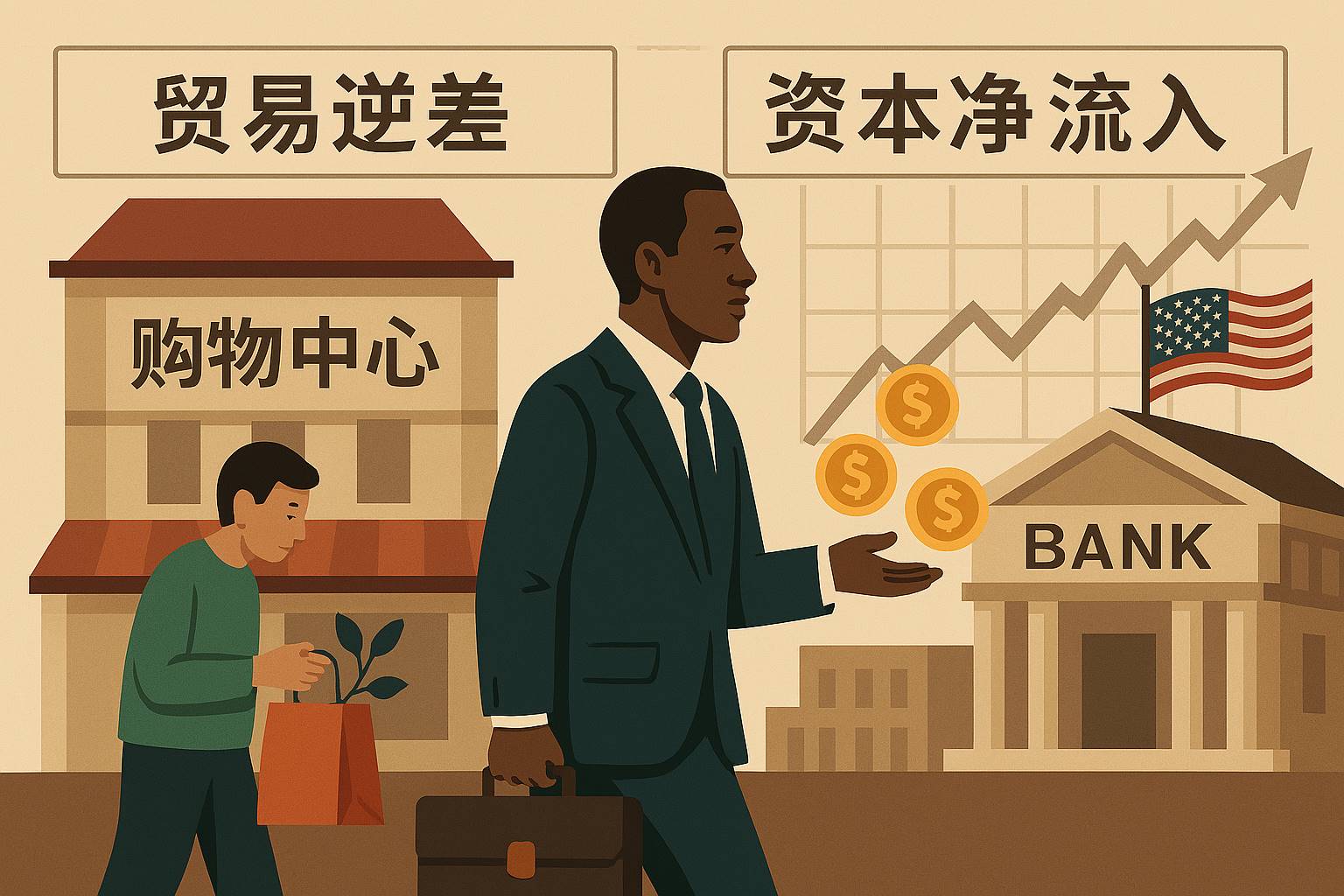
4.3 Trade Deficit is Only Part of the Truth
When we discuss trade deficits, we often focus solely on the import and export of goods and services. However, international trade also includes the flow of capital. Under dollar hegemony, the United States' trade deficit is often accompanied by a significant net inflow of capital.
This is because when the U.S. purchases goods and services from other countries, dollars flow to those countries. These countries often reinvest the dollars they earn back into U.S. financial markets, such as purchasing U.S. Treasury bonds, stocks, and real estate. This capital repatriation somewhat offsets the U.S. trade deficit.
You can think of this as a large shopping mall. Customers (other countries) buy goods in the stores (U.S. economy) and then deposit the money they earn back into the mall's own bank (U.S. financial system).
According to data from the U.S. Department of Commerce, the U.S. has maintained a trade deficit for many years, but at the same time, its financial account has shown a surplus, meaning that the capital flowing into the U.S. exceeds the capital flowing out. This somewhat explains why the U.S. can maintain a trade deficit for a long time without triggering a severe economic crisis.
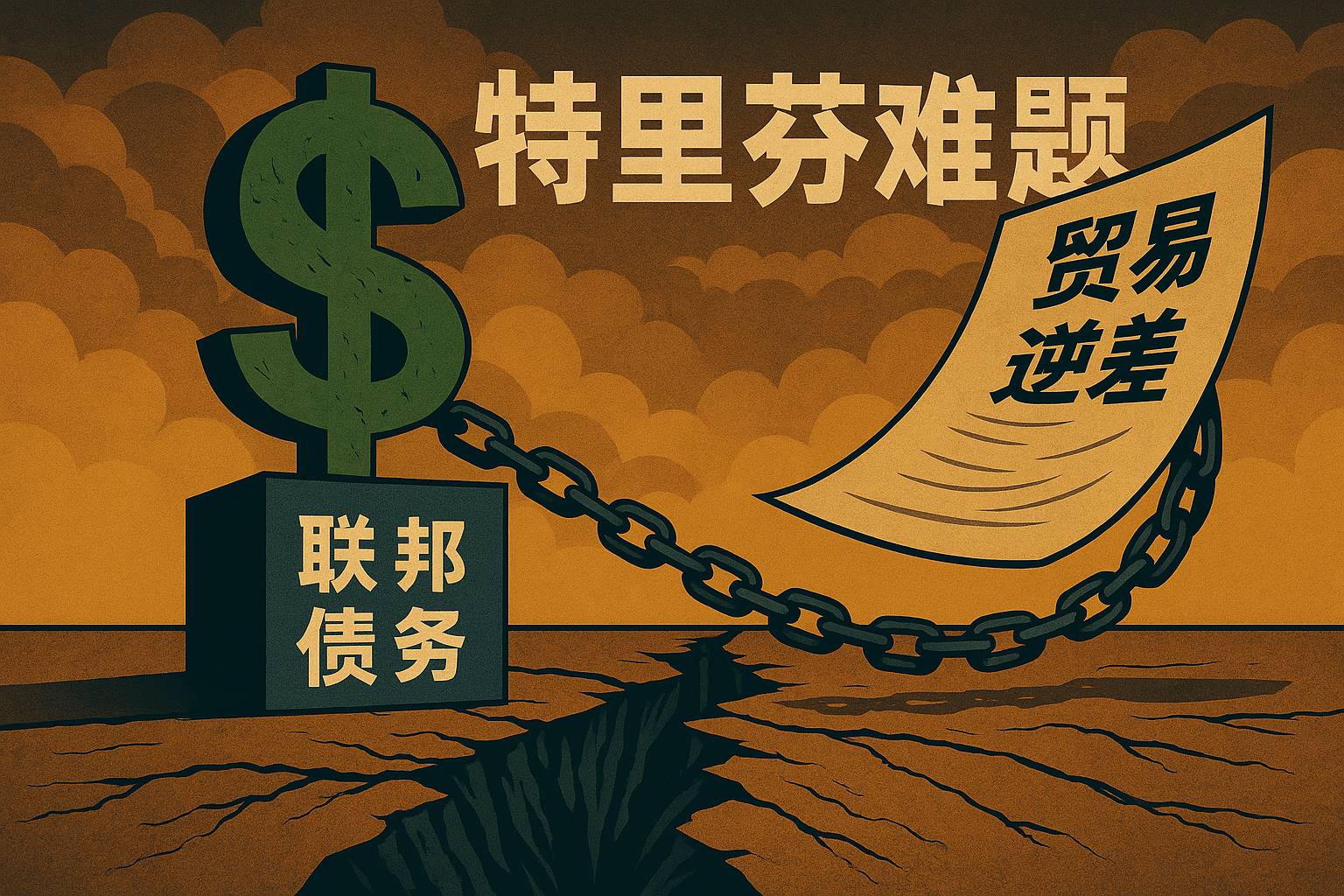
4.4 The Triffin Dilemma: The Inherent Contradiction of Dollar Hegemony
As the global reserve currency, the dollar's status itself embodies a famous economic dilemma—the Triffin Dilemma. This dilemma was proposed by American economist Robert Triffin in the 1960s.
Triffin pointed out that to meet the growing global demand for dollars, the U.S. must continuously export dollars, which means that the U.S. needs to maintain a long-term trade deficit. Only through a trade deficit can dollars flow around the world, becoming reserve currencies and mediums of exchange for other countries.
However, a sustained trade deficit will ultimately lead to the accumulation of U.S. debt, and the credibility of the dollar will be called into question. If the credibility of the dollar declines, countries may reduce their holdings of dollars and turn to other currencies as reserves, which would undermine the dollar's hegemonic status.
This creates a dilemma: to maintain global economic liquidity, the U.S. needs to maintain a trade deficit; but a long-term trade deficit threatens the long-term stability of the dollar.
In short, being the leader is not an easy task.
4.5 Summary: Trade Deficit Under Dollar Hegemony
In summary, against the backdrop of dollar hegemony, the U.S. trade deficit has its particularity. It is not merely a simple difference between the import and export of goods and services but is closely related to the dollar's status as the global reserve and settlement currency. Dollar hegemony grants the U.S. many economic "privileges," but it also brings inherent contradictions and potential risks.
Returning to the current tariff war, U.S. President Trump claims that increasing tariffs will reduce the U.S. trade deficit, believing this can protect American jobs and industries. However, from the perspective of dollar hegemony, the U.S.'s true intentions may be more complex.
Some analysts believe that the real purpose of the U.S. initiating the tariff war is not merely to reduce the trade deficit but to maintain its leadership in the global economy and technology sectors. By pressuring specific countries and industries with tariffs, the U.S. may hope to force these countries to make concessions on trade rules, intellectual property protection, and technology transfer.
Moreover, tariffs can also be seen as a geopolitical tool used to adjust economic and political relations with specific countries. Simply put, due to the existence of dollar hegemony, tariffs are being "weaponized."
For the world, addressing dollar hegemony is the fundamental solution to the weaponization of U.S. tariffs.

5. The "Achilles' Heel" of Dollar Hegemony
The dollar's hegemony is like the ancient Greek hero Achilles; no matter how strong it appears, it always has a fatal weakness. Behind the strength of dollar hegemony lie multiple fatal economic and political vulnerabilities. Once these vulnerabilities are pierced by market forces or political changes, the U.S. and the global economy will face unprecedented turmoil.
5.1 The Unsustainability of Over-Indebtedness
To understand the issues surrounding dollar hegemony, we first look at the data. As of March 2025, the U.S. federal government debt has exceeded $36.56 trillion, which is more than 124% of its Gross Domestic Product (GDP). What does this data mean? Simply put, the scale of debt generated by the U.S. government each year exceeds the total economic output for that year.
However, it is strange that the massive U.S. debt has not led to higher financing costs. On the contrary, over the past few decades, the U.S. has continuously lowered borrowing rates due to the international status of the dollar, making the cost of borrowing exceptionally low. U.S. Treasury yields have remained low for a long time—for example, from 2020 to 2024, the average yield on 10-year U.S. Treasury bonds was only about 2%, while other highly indebted countries, such as Brazil, saw their bond yields exceed 10% or even higher during the same period.
This enormous debt and low-cost financing may seem like a beautiful situation, but it is actually an unsustainable economic miracle. Once global investors lose confidence in the U.S.'s ability to repay its debt, the cost of debt will rise rapidly, and the credibility of the dollar will face severe tests.
The 2008 subprime mortgage crisis was the first time dollar hegemony was seriously questioned. Although the Federal Reserve ultimately rescued the situation with massive quantitative easing (QE), the U.S. temporarily weathered the storm, but it also laid the groundwork for deeper debt and inflation risks.
Since the COVID-19 pandemic in 2020, the U.S. federal government and the Federal Reserve have conducted over $4.5 trillion in QE. Such astonishing "money printing" operations have once again placed the credibility of the dollar on the edge of a cliff.
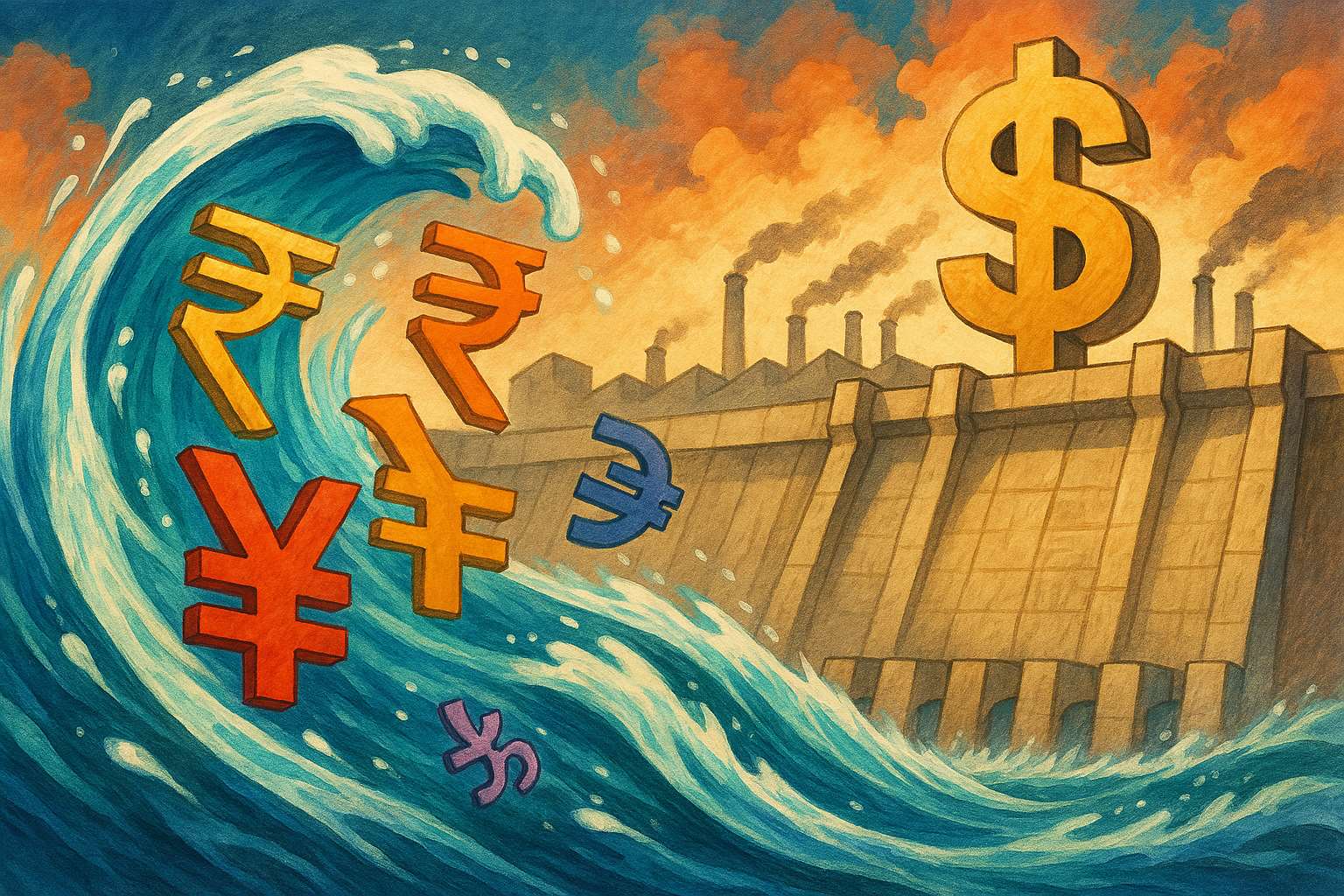
5.2 The Global Wave of Resistance Against the Dollar System
For a long time, the U.S. has implemented economic sanctions and trade restrictions through the dollar system, leading to serious dissatisfaction among countries around the world. Data shows that from 2010 to 2024, the U.S. Treasury implemented over 20,000 financial sanctions and asset freezes against other countries, companies, and individuals through the dollar clearing system.
A recent example is the U.S.'s swift imposition of the most severe financial sanctions in history against Russia after the outbreak of the Russia-Ukraine conflict in 2022: freezing approximately $300 billion of Russia's foreign exchange reserves and banning Russian banks from accessing the SWIFT (Society for Worldwide Interbank Financial Telecommunication) dollar clearing system.
In the face of the dollar's "financial hegemony," an increasing number of countries are actively seeking alternatives, attempting to bypass the dollar clearing system. For instance, the BRICS countries (Brazil, Russia, India, China, South Africa) have accelerated the promotion of non-dollar trade settlement agreements since 2023. Data shows that in 2024, non-dollar settlements accounted for over 70% of trade between China and Russia; India signed an agreement with the UAE to settle bilateral trade in rupees in 2023; Brazil and Argentina are actively promoting transactions in their local currencies to reduce dependence on the dollar.
Furthermore, in August 2024, the BRICS summit officially proposed the establishment of a "BRICS common currency." Although this idea is still in the exploratory stage, it undoubtedly shows that the trend of de-dollarization is accelerating.

5.3 The Challenge of Decentralized Currencies
If the efforts of various countries to de-dollarize are still in the preliminary stages, then the rapid development of digital currencies has opened up a new battlefield for the global financial market.
Cryptocurrencies, represented by Bitcoin, are gradually attracting the attention of more and more investors, businesses, and even governments worldwide due to their decentralized nature and inability to be controlled by a single country. According to a 2024 research report from Cambridge University, over 300 million people globally own or have used cryptocurrencies.
Although Bitcoin has not yet truly challenged the dollar's status as the global reserve currency, it offers a new solution for wealth storage and cross-border payments. El Salvador became the first country in the world to adopt Bitcoin as legal tender in 2021, followed by the Central African Republic in 2022. Although these countries are not large, such actions send a clear signal to the world: monetary sovereignty does not necessarily have to rely on the dollar system.
5.4 Possible Paths to the End of Dollar Hegemony
From historical experience, no currency's hegemony is eternal. The once-mighty Spanish dollar, Dutch guilder, and British pound all enjoyed glory on the historical stage but ultimately declined. While the dollar remains powerful, it will inevitably face cyclical challenges.
Experts believe that there are roughly three paths that could lead to the end of dollar hegemony:
First, the trend of global multipolarization continues to accelerate. The U.S.'s international economic status gradually declines, and the global economic focus shifts to emerging markets in East Asia, South Asia, and the Middle East. More countries, based on their own interests, promote the widespread adoption of non-dollar settlement mechanisms. The demand for the dollar as a reserve currency gradually decreases, diluting dollar hegemony.
Second, the credit system of U.S. debt is severely questioned by the market, and the U.S. is unable to sustain low-cost financing. A surge in debt interest rates leads to a government debt crisis, and the credibility of the dollar faces an unprecedented crisis. In this scenario, global capital markets will sell off dollar assets, prompting a collapse of dollar credibility and an instantaneous disintegration of the dollar system.
Third, the rapid proliferation of digital currencies makes global cross-border trade no longer highly dependent on the dollar clearing system. Especially if decentralized digital currencies like the digital yuan and Bitcoin become mainstream international payment tools, the global dependence on the dollar will significantly decrease, and the dollar will no longer possess absolute "financial weapon" functionality, leading to an automatic end to its hegemony.
However, decentralized stablecoins, especially those unrelated to dollar assets, will become strong competitors to replace the dollar.

6. Decentralized Stablecoins Ending Dollar Hegemony
In the past decade, the rapid rise of cryptocurrencies has revealed more possibilities beyond the traditional monetary system. Within this trend, stablecoins, with their relatively stable value anchoring, convenient cross-border payment functions, and decentralized potential, have gradually become an important force in changing the existing monetary landscape. However, it is worth noting that not all stablecoins qualify as "candidates" to end dollar hegemony in the future.
6.1 Classification and Operational Mechanism of Stablecoins
To understand stablecoins in depth, we first categorize them into three main types:
First type: Fiat-collateralized stablecoins.
Fiat-collateralized stablecoins, as the name suggests, refer to tokens issued with traditional fiat currencies such as the U.S. dollar or the euro as collateral, maintaining a 1:1 value peg to these currencies. The most famous examples include USDT (Tether) and USDC (USD Coin). As of April 9, 2025, USDT has a market capitalization of up to $140 billion, while USDC stands at $60 billion, together accounting for over 85% of the stablecoin market, as shown in the figure below.
The biggest advantage of this type of stablecoin lies in its ease of understanding and relatively low risk; as long as the issuer genuinely holds fiat assets equivalent to the amount issued, the price of its tokens can be effectively guaranteed. However, this also means that the stability and reliability of these stablecoins heavily depend on the credit of centralized institutions (such as Tether and Circle).
However, the core issue lies here—centralized institutions inevitably face constraints from political forces, judicial jurisdictions, and financial regulations.
Second Type: Cryptocurrency-collateralized Stablecoins
Cryptocurrency-collateralized stablecoins use other crypto assets (such as ETH, BTC) as collateral, ensuring price stability through over-collateralization. Representative examples include DAI (MakerDAO) and the recently emerged LUSD (Liquity) decentralized stablecoins.
In August 2024, MakerDAO underwent a significant rebranding, changing its name to Sky and renaming its stablecoin DAI to USDS. For the sake of convenience, we will continue to use the old name for now.
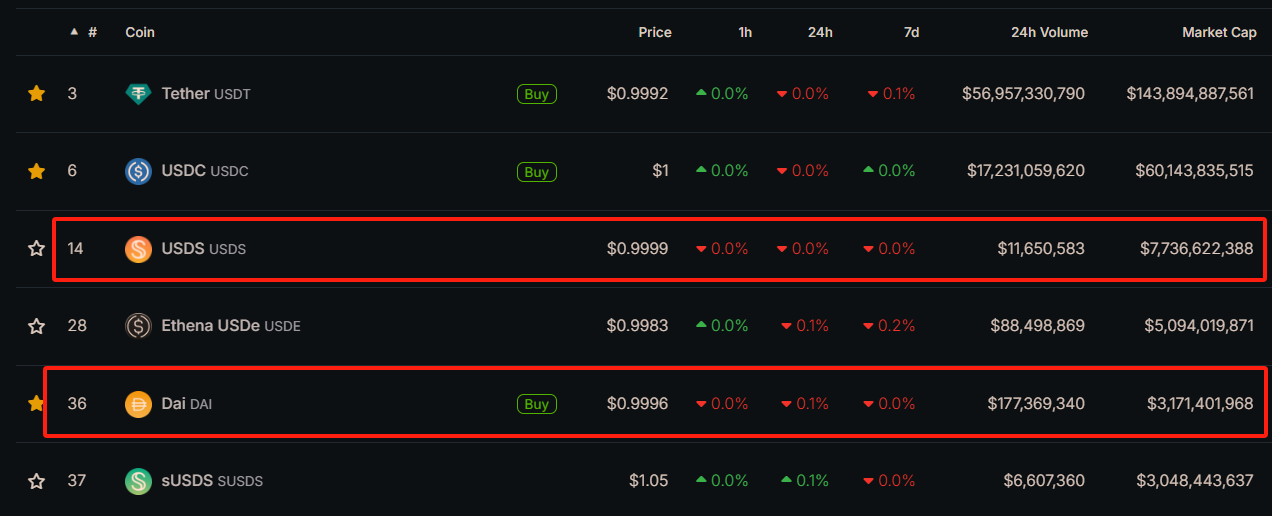
As of the end of March 2025, the combined market capitalization of DAI and USDS exceeded $10.8 billion, making it the leader among cryptocurrency-collateralized stablecoins, as shown in the figure above. This type of stablecoin is far more decentralized than fiat-collateralized stablecoins because its collateral consists of decentralized crypto assets, and both the collateralization and issuance processes are automatically completed through smart contracts, theoretically eliminating the possibility of human manipulation.
Third Type: Algorithmic Stablecoins (Uncollateralized)
The concept of algorithmic stablecoins was first proposed by Basis and later by TerraUSD (UST). These stablecoins do not have any fiat or other assets directly backing them; instead, they automatically adjust supply through complex algorithms, attempting to peg their value to fiat currencies (usually the U.S. dollar). The collapse of TerraUSD in 2022 caused severe market turmoil, leading the market to believe that algorithmic stablecoins had failed. However, recent new algorithmic stablecoins like Frax and Reflexer are attempting to gradually restore market confidence.
Despite this, the long-term stability of algorithmic stablecoins remains unrecognized by the market due to the lack of real asset backing.
6.2 Why USDT and USDC Cannot End Dollar Hegemony?
Returning to the core question of this article—why are stablecoins like USDT and USDC, backed by U.S. dollar assets, difficult to replace the dollar as the new hegemonic currency?
The key reason is that their value foundation is still firmly tied to U.S. dollar assets, and the control over these dollar assets belongs to the U.S. government and its regulatory agencies.
First, let’s look at actual data and examples:
During the Russia-Ukraine conflict in 2022, the U.S. launched unprecedented financial sanctions against Russia, freezing over $300 billion of Russia's foreign exchange reserves, which included a significant amount of financial instruments backed by U.S. dollar assets. Subsequently, the U.S. Treasury explicitly warned all U.S.-jurisdictional stablecoin issuers to freeze any accounts related to Russian entities.
Circle (the issuer of USDC) quickly responded by freezing USDC accounts worth millions of dollars. This action clearly demonstrates a fact: USDC and similar dollar-backed stablecoins are essentially just blockchain versions of the dollar, and their essence has not changed—their assets are still under the strong jurisdiction of U.S. regulatory authorities.
Now let’s look at USDT. From 2021 to 2024, USDT froze dozens of addresses at the request of the U.S. Department of Justice (DOJ) and the New York Attorney General's Office (NYAG), with a total amount reaching hundreds of millions of dollars. This also indicates that even though Tether, the issuing company of USDT, claims to be registered in the British Virgin Islands and is not subject to U.S. jurisdiction, under the pressure of sanctions from the global dollar settlement network, Tether still had to "bow its head" and comply with the freezing measures.
More critically, this power is essentially identical to that of the traditional financial system's SWIFT system. The U.S. only needs to issue orders to any stablecoin issuer backed by dollar assets to quickly freeze accounts and cut off funding links. This means that stablecoins backed by dollar assets cannot escape the direct control of dollar hegemony and thus cannot truly replace the dollar's hegemonic position in global trade and finance.

6.3 The Stablecoins That Can Truly End Dollar Hegemony—Decentralized Stablecoins Without Dollar Asset Collateral
So, the stablecoins that can truly break this deadlock must be completely decoupled from dollar assets, unfreezable, and thoroughly decentralized.
What characteristics would such stablecoins have? Taking MakerDAO's decentralized stablecoin DAI as a starting point, the ideal model for future stablecoins might be:
Diversified and decentralized collateral assets: No longer primarily using the U.S. dollar or dollar financial assets as collateral, but rather focusing on decentralized assets like BTC and ETH, and possibly even tokenized forms of gold or other non-dollar assets.
A completely decentralized governance mechanism: The collateralization, minting, and liquidation mechanisms are fully realized through smart contracts, and no centralized entity or state power can unilaterally control or freeze assets.
No regulatory single point of failure risk: All collateral assets are distributed across different nodes globally, and no single government or institution can freeze or control them, meaning this stablecoin will be completely free from the influence of U.S. financial hegemony.
When the collateral assets of stablecoins are completely de-dollarized, the U.S. is effectively kicked out of the center stage of this monetary game, directly leading to the disappearance of the seigniorage income it has long enjoyed.
Seigniorage is essentially the extra revenue that the U.S. gains from issuing dollars, which leads the world to hold dollar assets actively. For example, the U.S. government saves up to hundreds of billions of dollars in interest costs each year due to the global reserve status of the dollar (in 2023 alone, the estimated savings from U.S. Treasury interest costs exceeded $250 billion).
However, when stablecoins completely shift to non-dollar assets like BTC, ETH, or gold, countries and institutions around the world no longer need to hold dollars or dollar bonds as collateral assets, which means the U.S. loses the right to print "paper money" at zero cost in exchange for real global goods.
From this moment on, the U.S. Treasury can no longer issue Treasury bonds as easily as before, relying on the dollar's status as a global settlement currency to obtain global funds for low-cost financing. This new stablecoin landscape effectively cuts off the invisible economic channel through which the U.S. has harvested global wealth through seigniorage and low-cost financing.
6.4 Summary: Decentralized Stablecoins Are Key to Ending Fiat Currency Hegemony
Once such decentralized stablecoins are widely adopted, they will completely overturn the existing financial landscape:
Countries will no longer need to go through the dollar clearing system (such as SWIFT) for trade, freeing themselves from the threat of sanctions and freezes.
The free flow and security of global funds will be significantly enhanced, with funds not being arbitrarily blocked or frozen, nor used as weapons in geopolitical struggles.
The cost of funds will be greatly reduced, no longer requiring payment of invisible "seigniorage" and "dollar taxes" to dollar hegemony.
As blockchain technology and decentralized governance mechanisms mature, the global economy may gradually break free from the shadow of dollar hegemony, ushering in a truly free and open financial new era.
Decentralized, de-dollarized stablecoins will become a new world currency, a world currency that will not form new hegemony.
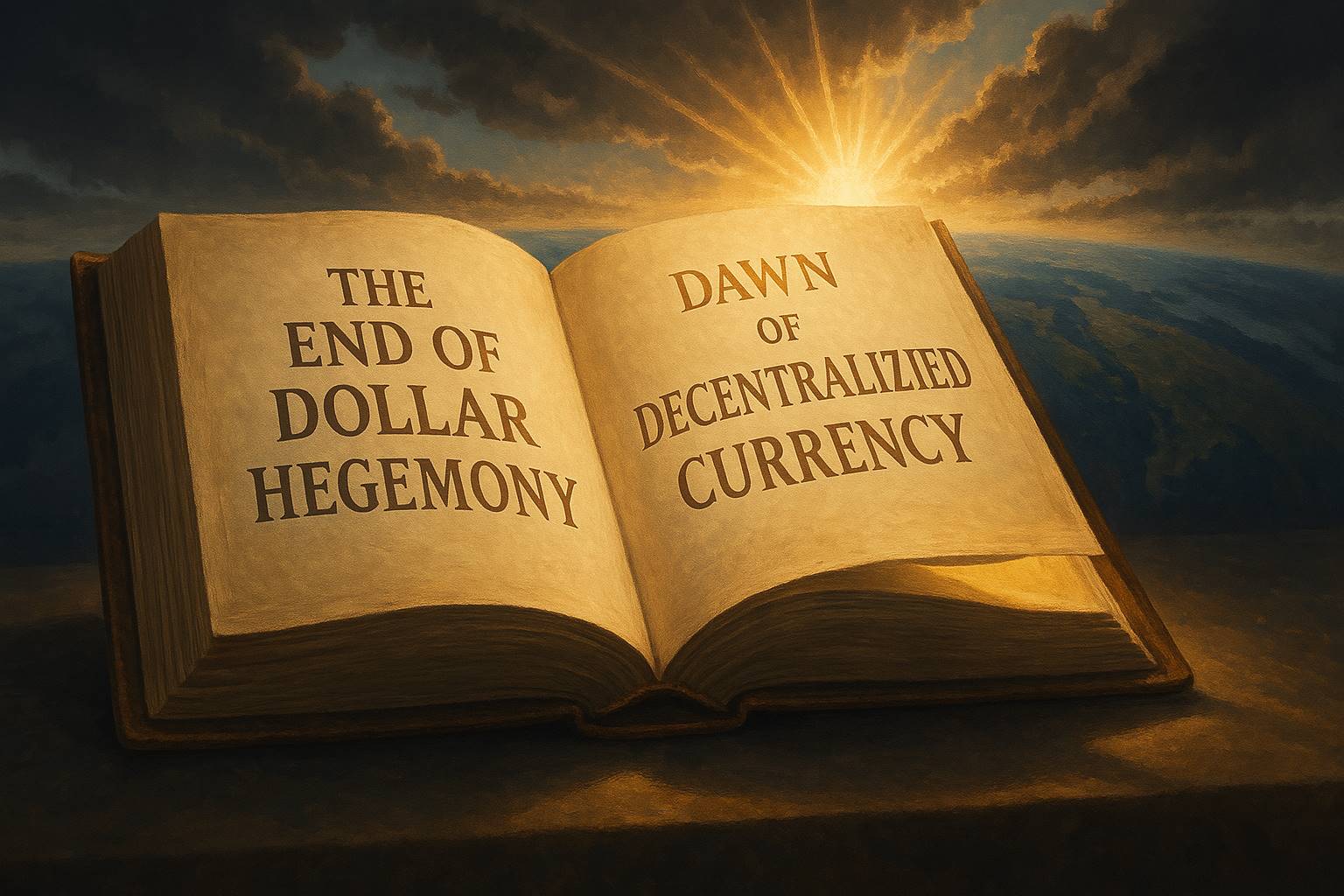
Conclusion
The era of the dollar may come to an end, not because the U.S. is no longer strong, but because the world is unwilling to entrust its fate to a piece of paper that can turn into a weapon at any moment.
History repeatedly reminds us: the currency is never just cold numbers; it is the trust and freedom of humanity. When the dollar repeatedly uses its hegemonic position to drag the global economy into a chasm of division and stagnation, a new financial order will quietly rise.
The emergence of decentralized stablecoins not only signifies innovation in financial tools but also represents the awakening of the human spirit of monetary freedom. Truly secure wealth is never guaranteed by power but is built on technology and consensus. The future global economy is destined to belong to decentralized currencies that cannot be frozen or banned by any power.
When stablecoins no longer rely on dollar assets as collateral, dollar hegemony will also fade away. We stand at a turning point in an era, witnessing not only the outcome of a tariff war but also a historic moment marking the end of currency hegemony.
What should stablecoins rely on instead of the dollar? Bitcoin, the original cryptocurrency. Now, how should the ordinary person at the beginning face this question? The answer naturally emerges. It’s simple: from now on, set aside living expenses and DCA into Bitcoin. For more detailed content, you can refer to "Bitcoin: The Ultimate Hedge for Long-Termists?"
Perhaps years from now, when people look back at today, they will marvel at the realization that:
The dawn of monetary freedom quietly began in this silent war.
It may not be spectacular, but it will profoundly change the world.
免责声明:本文章仅代表作者个人观点,不代表本平台的立场和观点。本文章仅供信息分享,不构成对任何人的任何投资建议。用户与作者之间的任何争议,与本平台无关。如网页中刊载的文章或图片涉及侵权,请提供相关的权利证明和身份证明发送邮件到support@aicoin.com,本平台相关工作人员将会进行核查。




